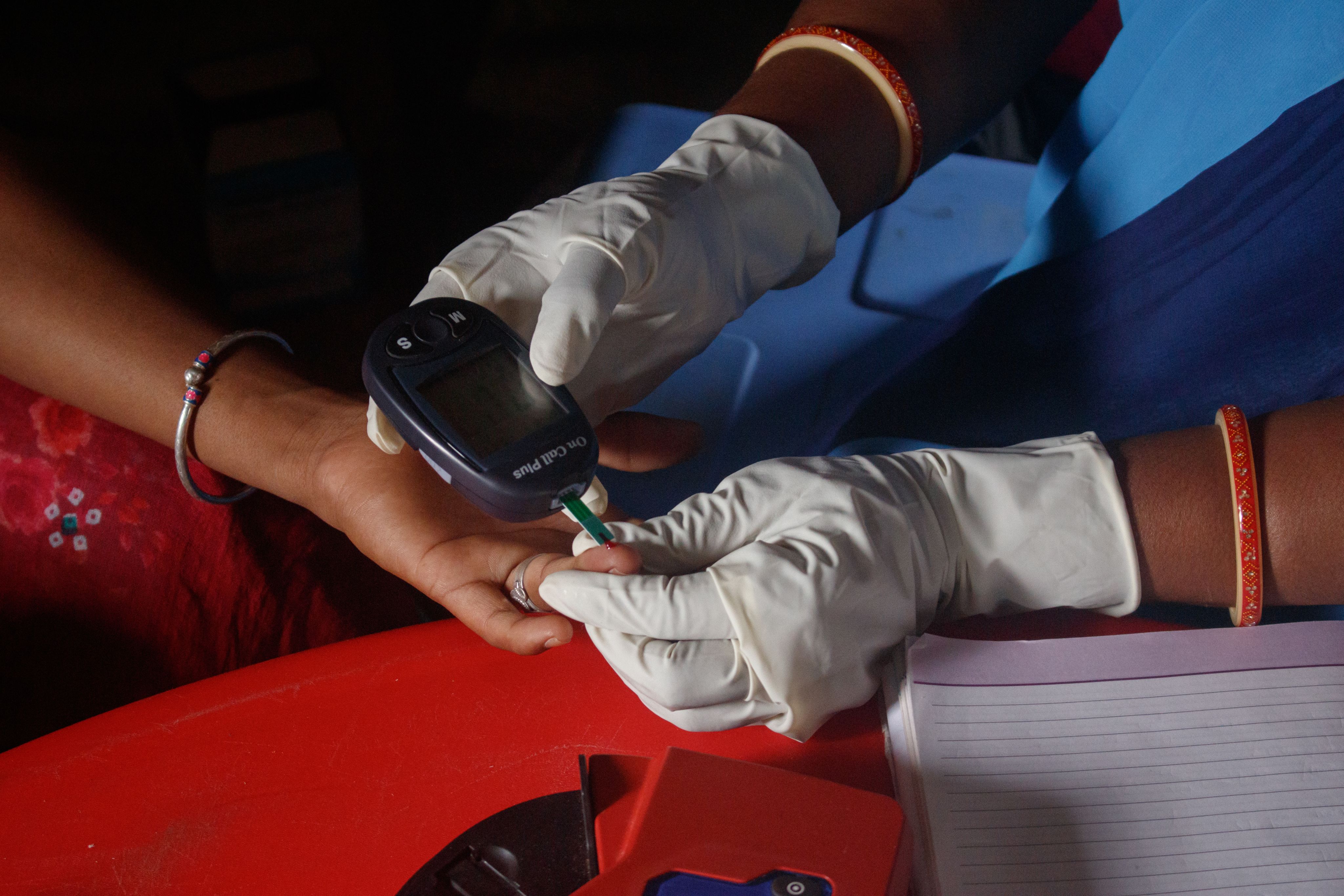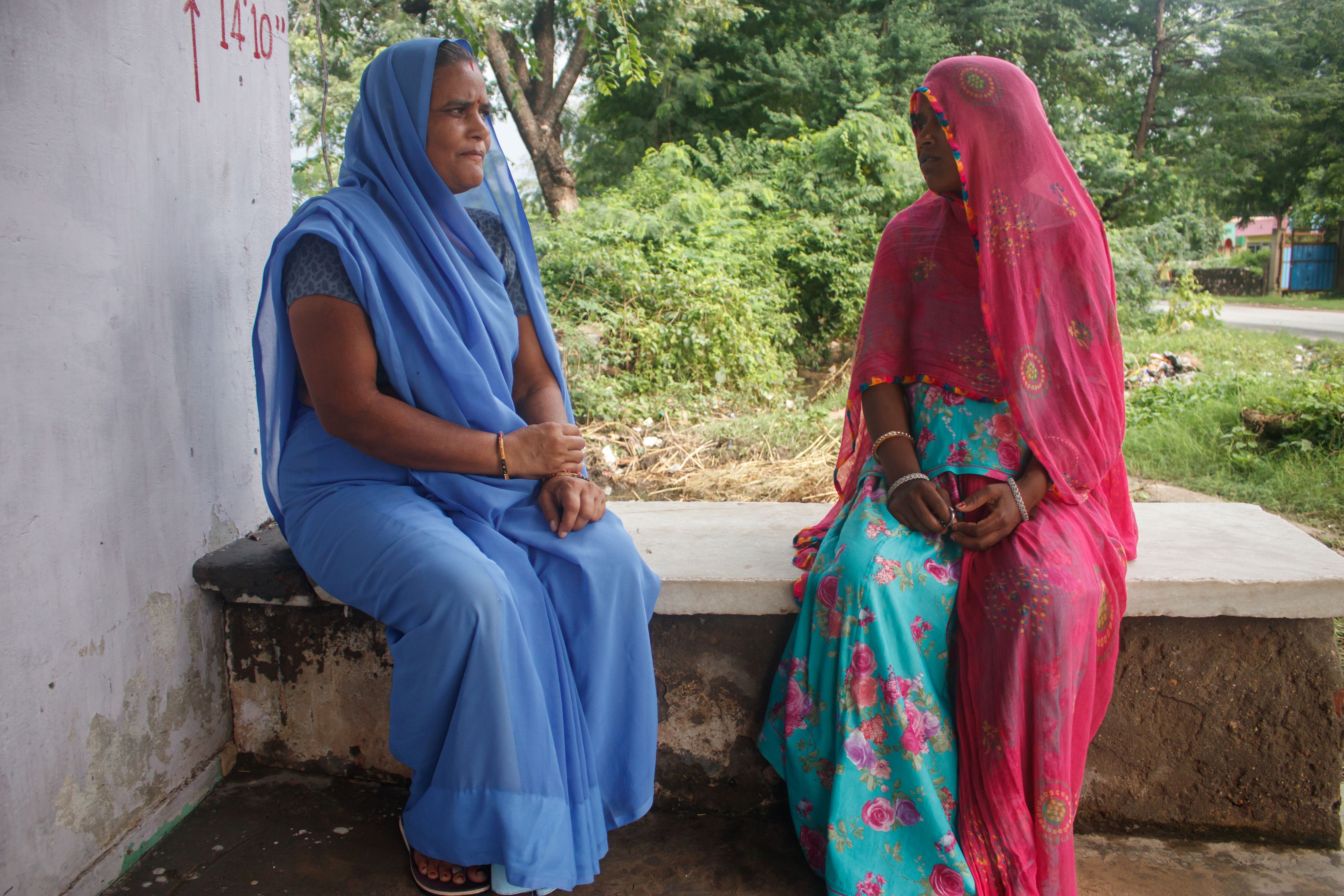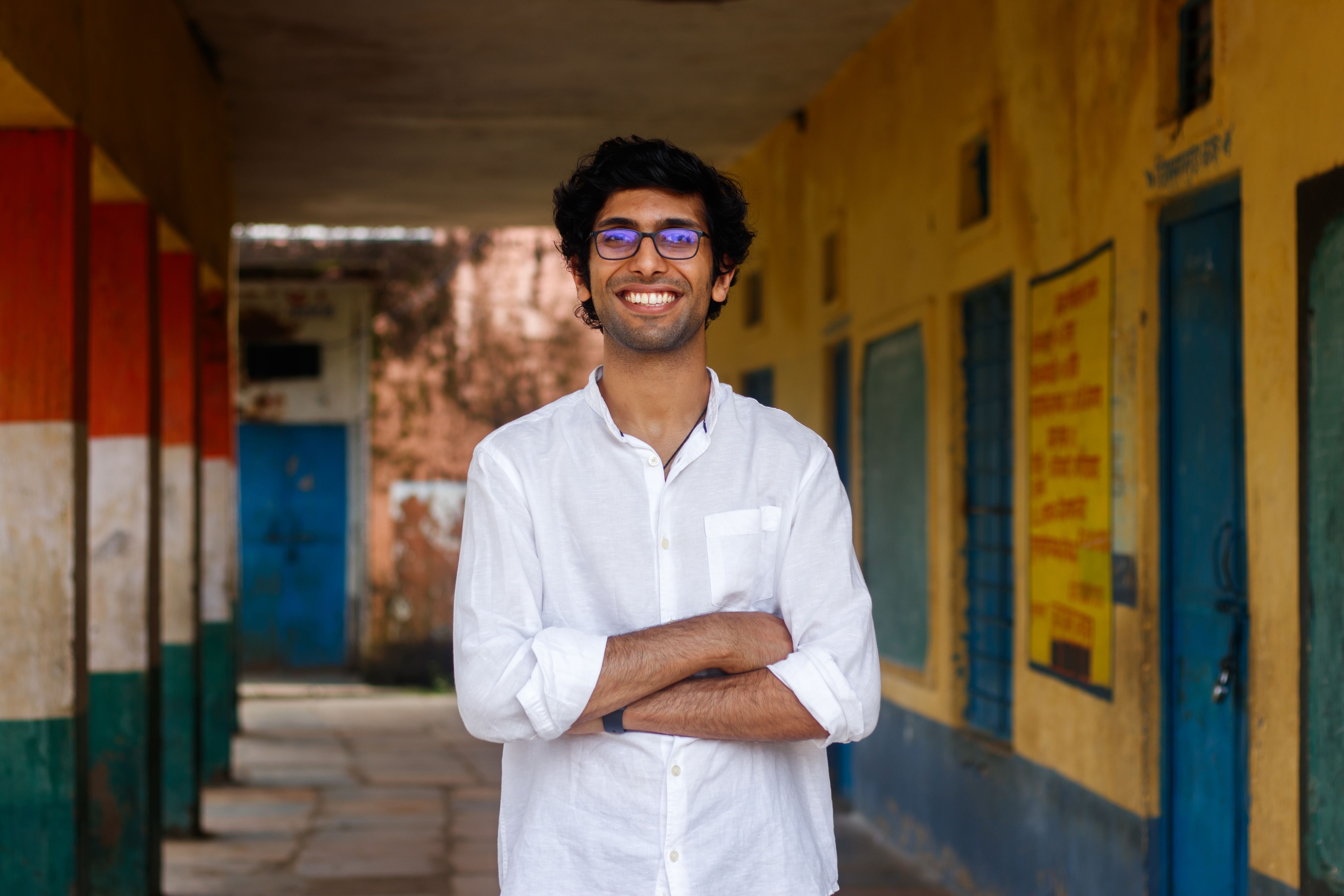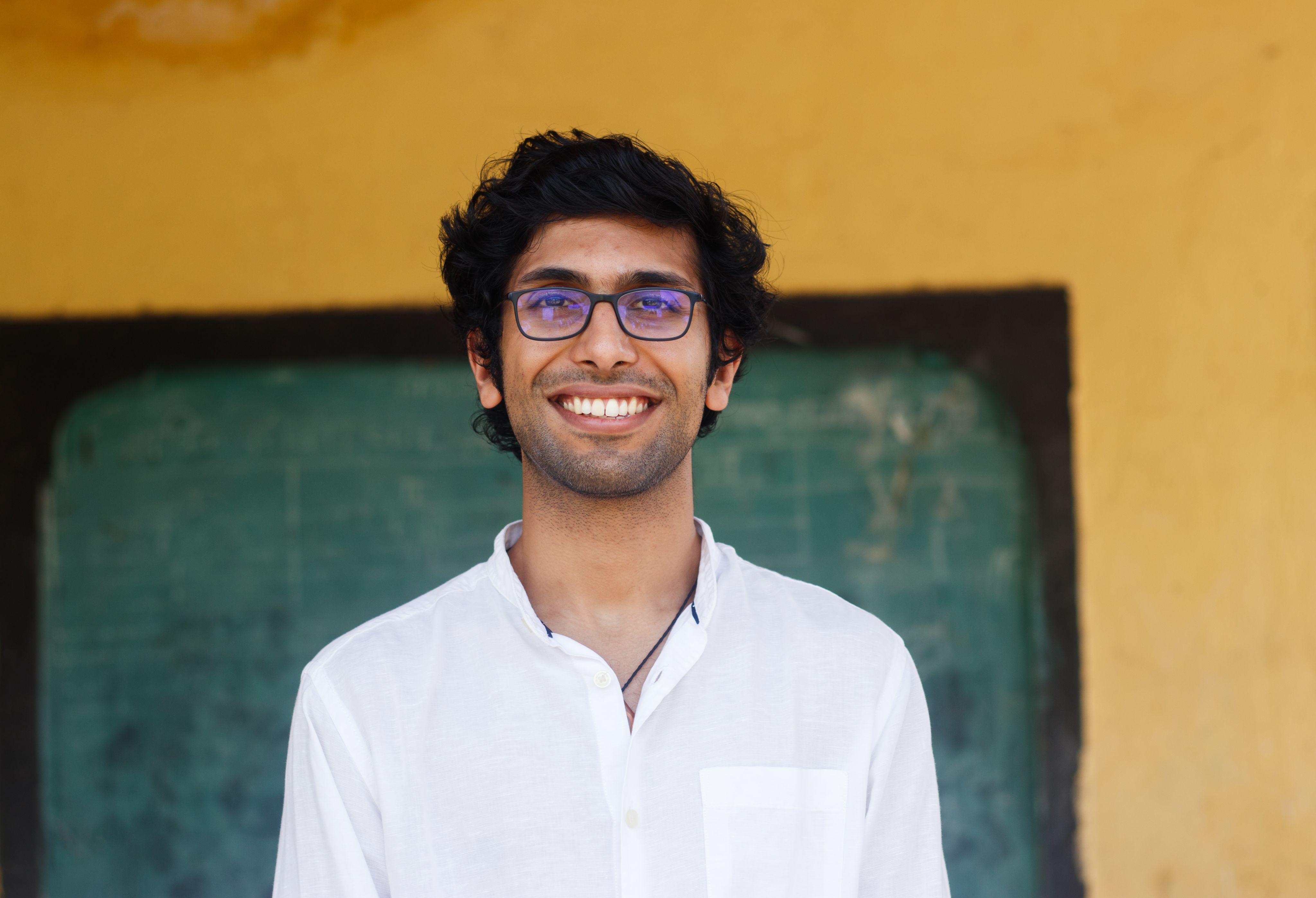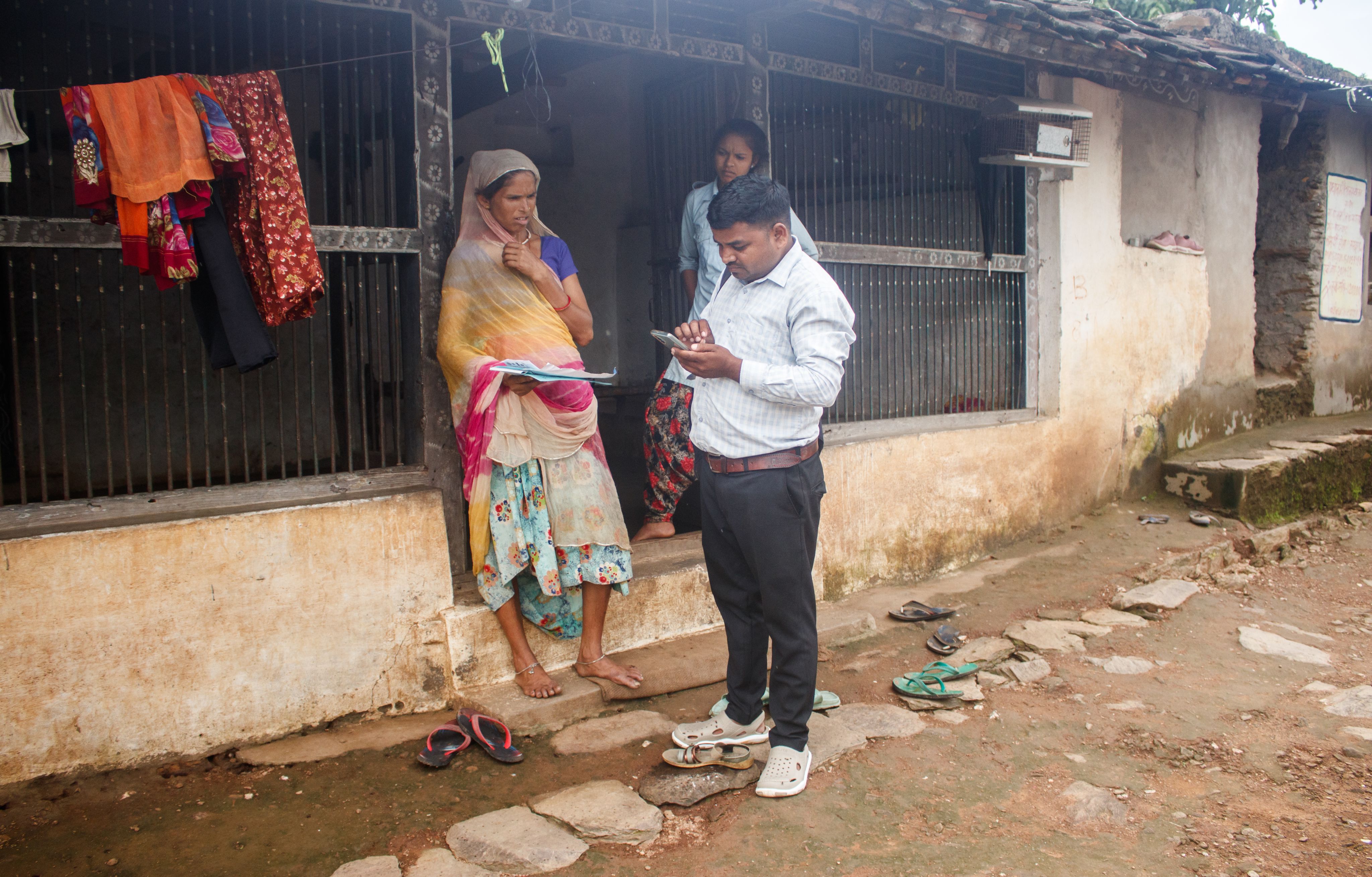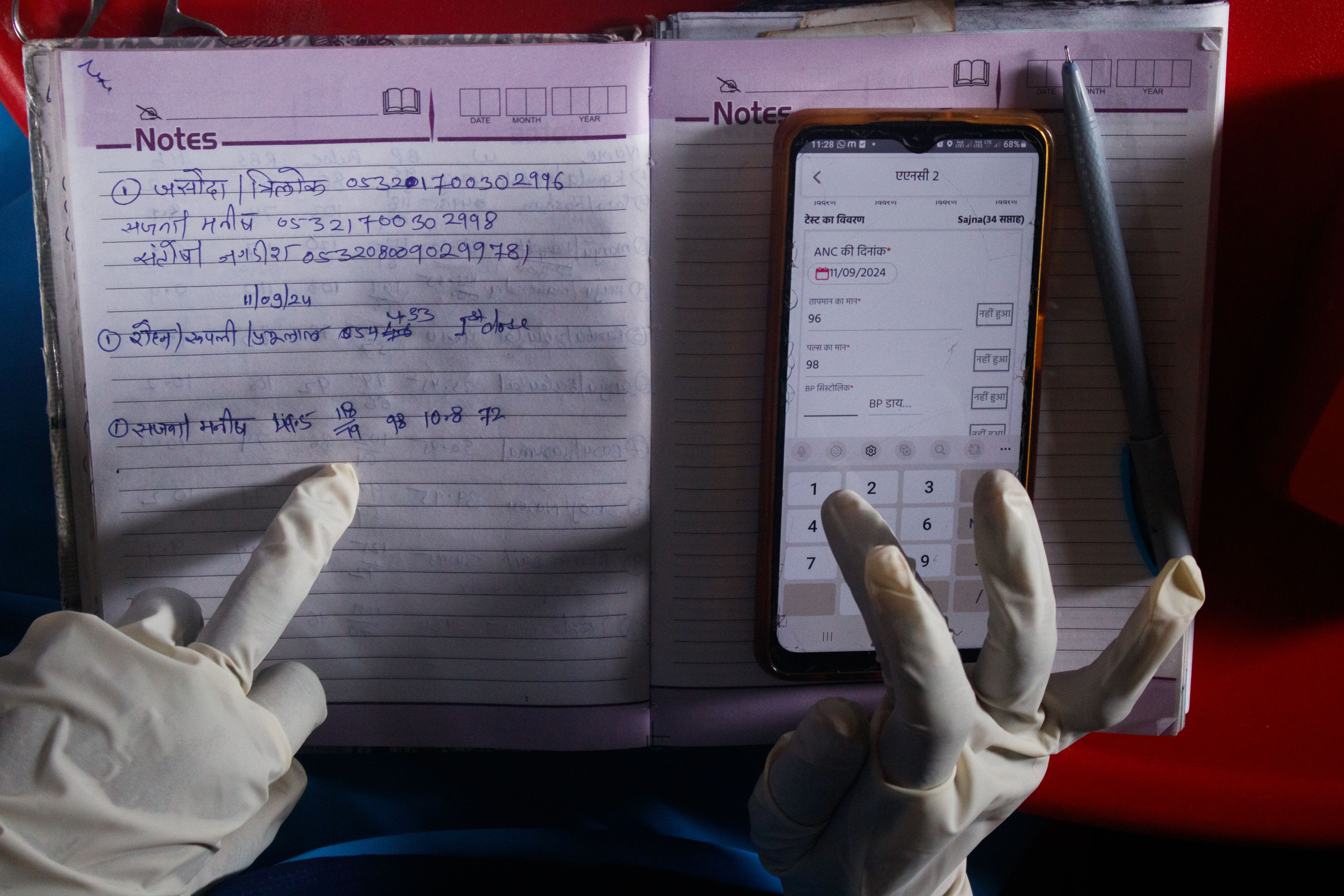How digital record keeping is strengthening community health care in India
Khushi Baby, a nonprofit based in Rajasthan, India, addresses health care gaps by using digital records to track maternal and child health focusing on malnutrition, anemia, and vaccination coverage.
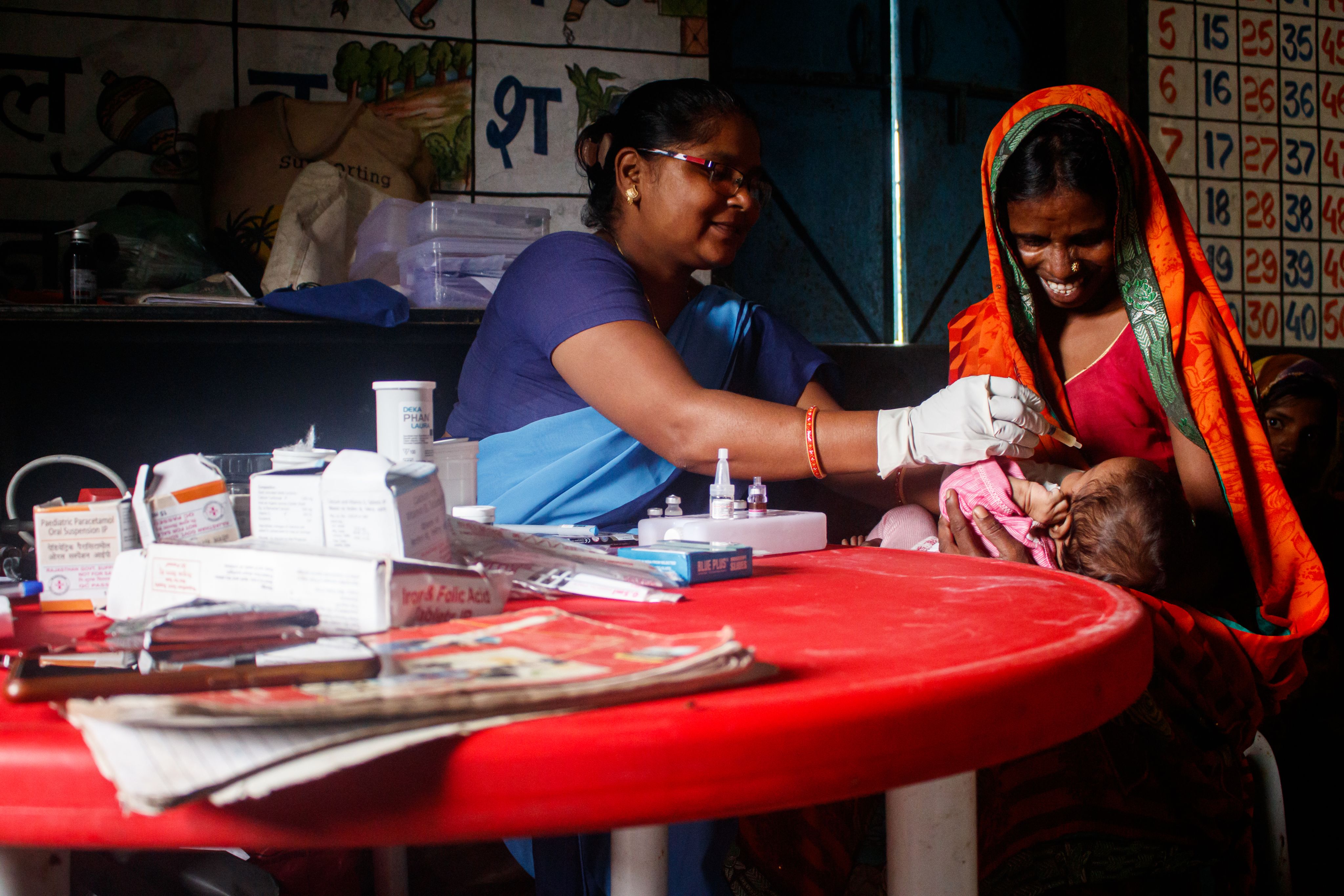
When Leela first experienced dizziness, she took a 10-minute break and resumed harvesting crops in the fields for six more hours until she collapsed. The dizzy spells continued for over a week until community health care worker Bhomitra Sutar examined her.
“Looking at her eyes, I understood something was wrong,” Sutar said. Blood tests revealed she was severely anemic. By this time, Leela, a farmworker in Loyra village in northwestern India’s Rajasthan state — who prefers using her first name to protect her privacy — was two months pregnant.
Sutar referred her to the nearby Bargaon Community Health Center for intravenous iron sucrose treatment. “I knew she wouldn’t go easily because missing even a day’s work could cost her a lot.”
She entered her pregnancy details and hemoglobin levels in a mobile application called Khushi Baby. It has several subcategories for recording details such as the last menstrual period for pregnant women, hemoglobin levels, blood pressure, and much more. Upon filling out the details, the app immediately flagged Leela as a high-risk case needing urgent care. Sutar’s supervisors could also view this information on the app’s dashboard.
A health care worker taking the blood sample of a pregnant woman in Rajasthan’s Beranpara village to monitor hemoglobin levels.
A health care worker taking the blood sample of a pregnant woman in Rajasthan’s Beranpara village to monitor hemoglobin levels.
Upon entering pregnant women’s health care parameters and relevant information, the Khushi Baby app immediately generates a summary of high-risk cases.
Upon entering pregnant women’s health care parameters and relevant information, the Khushi Baby app immediately generates a summary of high-risk cases.
Khushi Baby addresses health care gaps by using digital records to track maternal and child health, focusing on malnutrition, anemia, and vaccination coverage. Community health care workers use the mobile application to record and monitor health data, ensuring timely intervention for high-risk cases. The application provides them with real-time information and helps them overcome challenges by quickly identifying maternal anemia, missed child vaccinations, and other cases.
+ Supporting the backbone of India’s rural health care system

Sutar is part of a network of more than one million women health care workers across India, known as accredited social health activists or ASHAs. With one ASHA for every 1,000 people, they are the backbone of India’s rural health care system and reach the country’s remotest corners to make health care accessible.
Based in Rajasthan’s Udaipur district, Sutar remains overburdened as the region struggles with high rates of malnourishment, maternal anemia, and missed vaccinations in children. But the Khushi Baby app provides her with weekly tasks, including scheduled visits to Leela, ensuring she stays on top of her workload.
ASHA Bhomitra Sutar regularly visits Leela to check on her health and ensure she receives timely treatment.
ASHA Bhomitra Sutar regularly visits Leela to check on her health and ensure she receives timely treatment.
“I informed her of the dates she needed to visit the health center and even noted them on her mother and child protection card,” Sutar shared.
After a few days, Sutar checked the app and found that Leela had not started her treatment. “Whenever a patient seeks anemia treatment, we enter the details in the app, which then notifies ASHAs,” said auxiliary nurse midwife Puja Goswami, Sutar’s immediate supervisor.
Despite Sutar reminding her several times, Leela hadn’t visited the health center. That’s when Sutar sought the help of Khushi Baby’s field monitor, Ashok Nama, who visited the family frequently and convinced Leela to get treatment. She was injected with iron sucrose five times, and only after that did her hemoglobin reach a normal level — by the eighth month of her pregnancy. Leela is due to give birth next month.
Khushi Baby has 15 field monitors whose primary role is to provide hands-on support to health care workers, offer training, and ensure that high-risk cases are identified early and receive timely treatment.

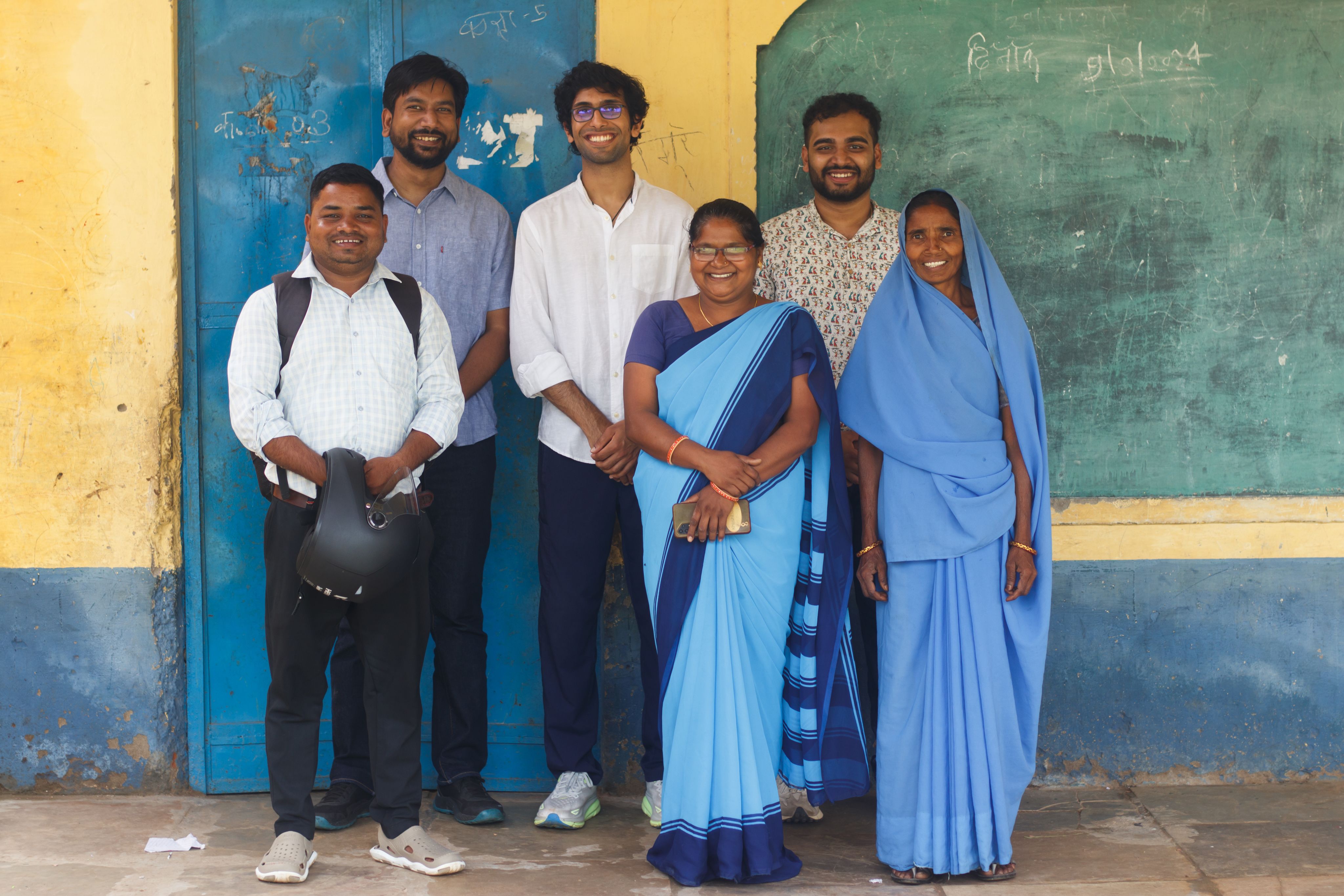
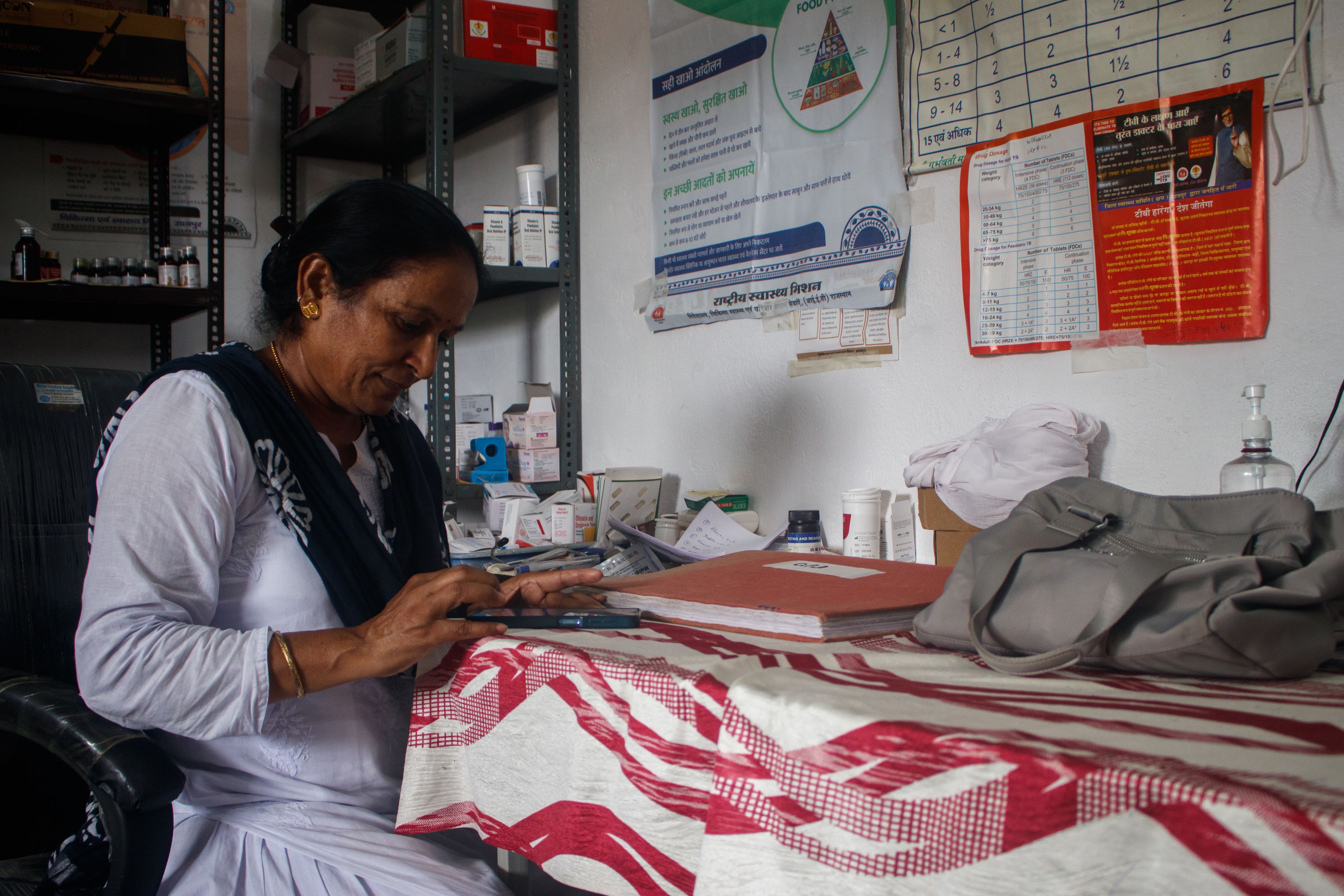
“Our field monitors not only provide ASHAs with technical support for digitizing health care records but also assist them in handling malnutrition and high-risk pregnancy cases,” Hamid Abdullah, implementation lead at Khushi Baby said.
Sutar has handled hundreds of similar cases, ensuring pregnant women don’t face complications. As per India’s National Family Health Survey 2019-2021, over 52% of pregnant women are anemic. Khushi Baby aims to address these health problems through digital record-keeping and timely intervention.
ASHA Lalita Kasota is to the left, and the field monitor Navratan Pargi is to the extreme right, tracking the weight of a high-risk pregnant woman. This detail will then be entered into the Khushi Baby app, which will help senior health care professionals track such cases.
ASHA Lalita Kasota is to the left, and the field monitor Navratan Pargi is to the extreme right, tracking the weight of a high-risk pregnant woman. This detail will then be entered into the Khushi Baby app, which will help senior health care professionals track such cases.
+ Using technology to improve maternal and infant health

“Khushi” means happiness in Hindi. In 2014, Khushi Baby, a nonprofit organization, was born out of the pressing issue of the high immunization gap in India. Co-founded by Ruchit Nagar while he was a student at Yale University, the initiative began as a classroom project to leverage technology to create a digital vaccine record that could be used in low-resource settings.
In its early years, Khushi Baby developed near-field communication or NFC-enabled wearables to track maternal and infant health data. They made a pendant for less than a dollar that children could wear and created a mobile app. It stored all medical information, allowing auxiliary nurse midwives, or ANMs, and doctors to access the child’s or mother’s health records by scanning them during health care visits.
In 2014, Ruchit Nagar co-founded Khushi Baby to address the problem of the higher immunization gap in India by creating a digital record to track vaccination.
In 2014, Ruchit Nagar co-founded Khushi Baby to address the problem of the higher immunization gap in India by creating a digital record to track vaccination.
In 2014, Ruchit Nagar co-founded Khushi Baby to address the problem of the higher immunization gap in India by creating a digital record to track vaccination.
In 2014, Ruchit Nagar co-founded Khushi Baby to address the problem of the higher immunization gap in India by creating a digital record to track vaccination.
To help pregnant women quickly avail of medical treatment, ANMs enter the medical information in an NFC tag, which is then pasted on the mother and child protection card.
To help pregnant women quickly avail of medical treatment, ANMs enter the medical information in an NFC tag, which is then pasted on the mother and child protection card.
“We initially created the wearable digital record to ensure the health record moves with the person, especially when mothers move to their parental home during the third trimester and see a new health worker in another village,” Nagar explained.
After a few years of gathering evidence, the organization approached the state government looking to scale up their focus solution across the state of Rajasthan.
“The health secretary told us that, ‘Well, you're looking at one problem, but actually I have 40 different digital health systems, and these community health workers are working on 12 different programs. We need to figure out how to fix the plumbing of the public health system,’” Nagar said. “We realized we had to focus on something more scalable, even though it meant losing some unique features of our platform, like having a decentralized, portable digital record in the form of a pendant that doesn’t require internet.”
Khushi Baby now works as a technical support partner to the Rajasthan state government under a nonfinancial agreement. To improve community health management and digitize health records, they design, develop, and implement digital health systems for the government.
ANM Jyoti Dahma demonstrates how she enters information into the Khushi Baby app and updates the NFC tags with the same information.

Now 75,000 health care workers, including ASHAs and ANMs, use the Khushi Baby app in Rajasthan and have digitized the health care records of 45 million people. The team is now expanding to the states of Karnataka and Maharashtra. Alongside tracking health care parameters, Khushi Baby is also helping track multidimensional poverty in India so that other government ministries can use the data and design policies accordingly.
+ Reaching zero-dose children
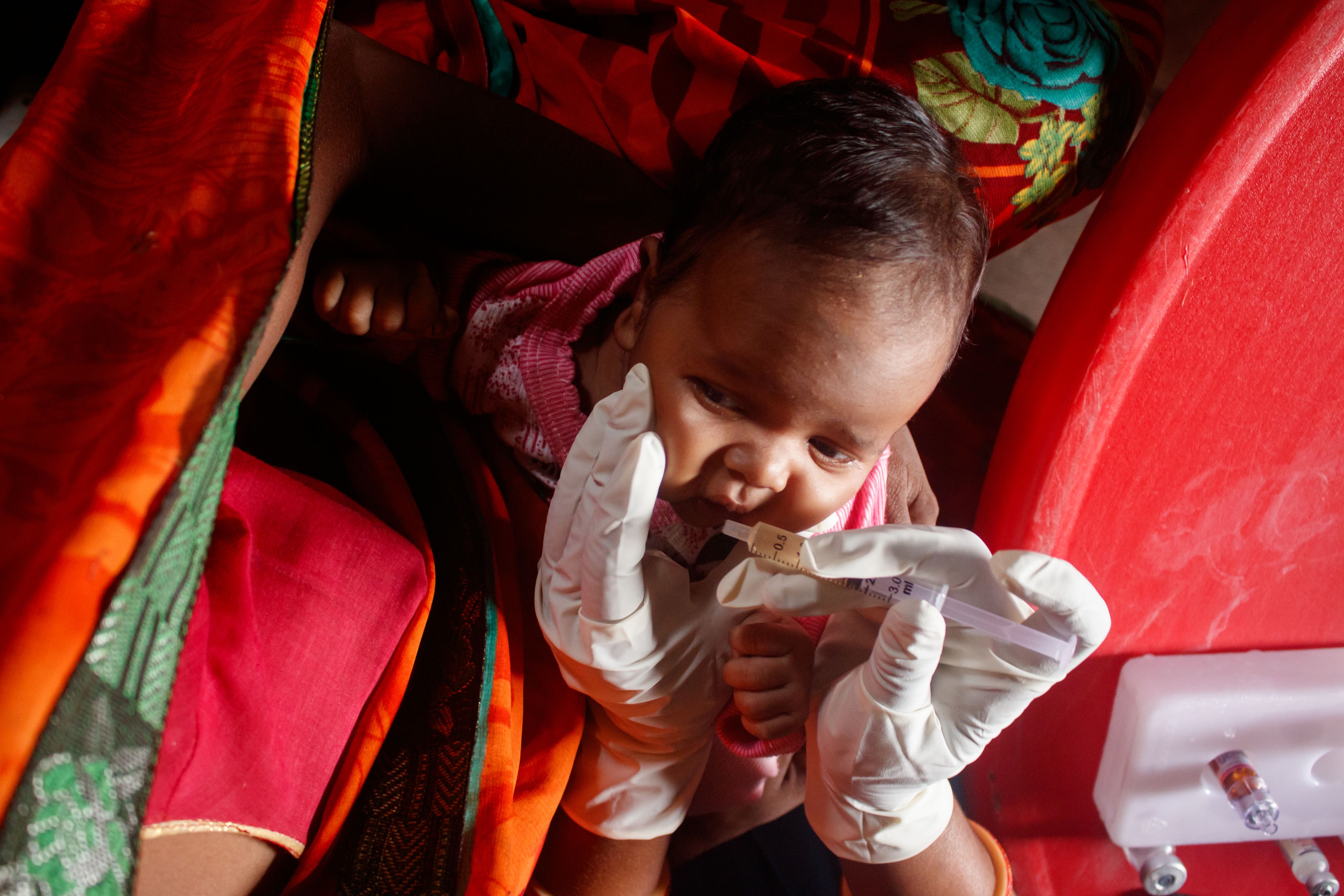
UNICEF’s State of the World’s Children 2023 report found that 1 in 5 children is either zero-dose — those who have never received any routine vaccines — or unvaccinated — those who have not completed their vaccination schedules — globally. Between 2019 and 2021, 48 million children missed out on routine immunization. In India, 1.6 million children received no vaccines in 2023, the second-highest number after Nigeria.
The Khushi Baby app has several questions for infants, focusing on their vaccination date, weight, and height, among other things. This helps determine their malnutrition levels and ensures they are immunized on time.
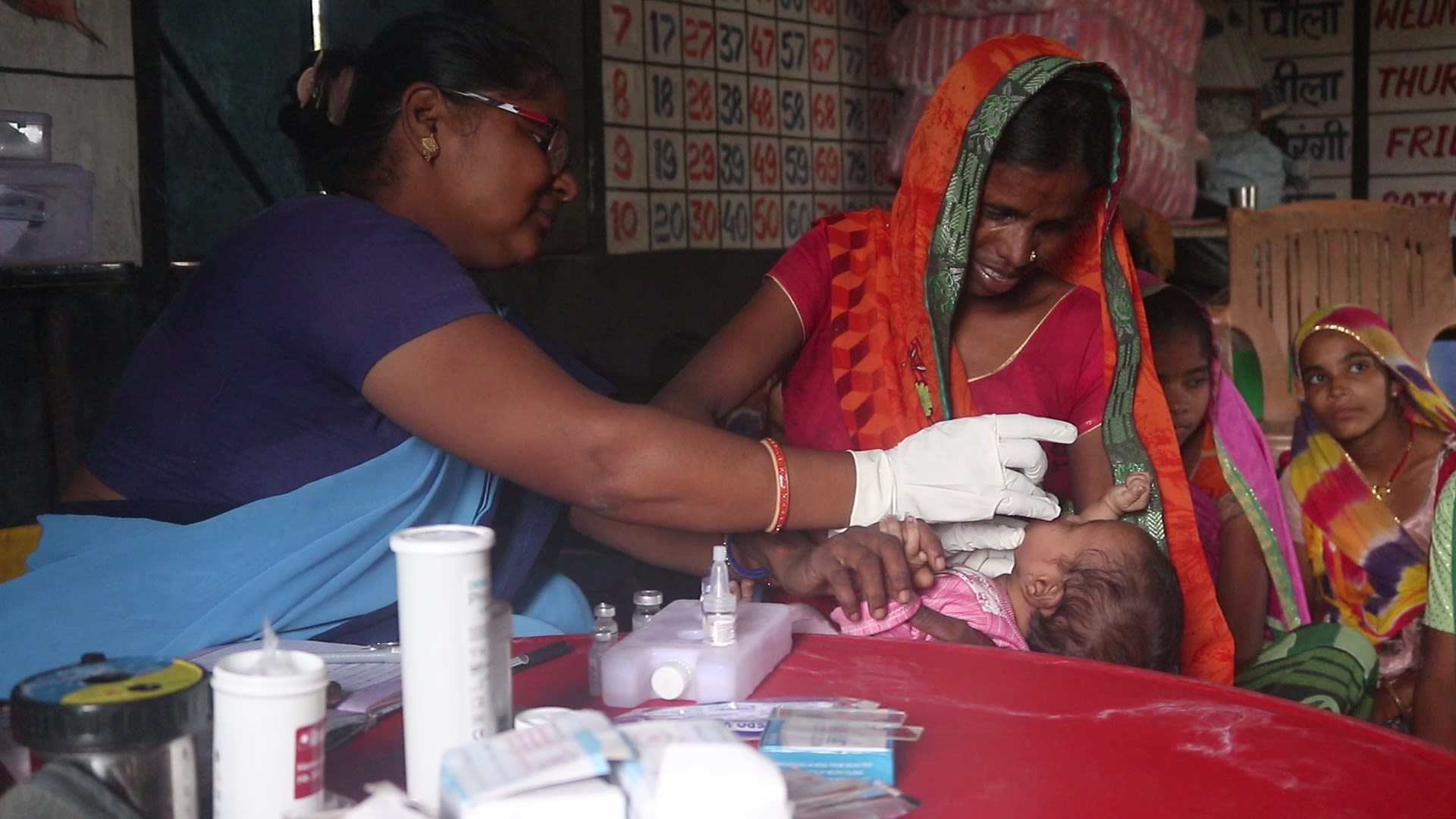

Auxiliary nurse midwife vaccinating an infant in Rajasthan’s Beranpara village during a routine health care camp. She then enters the details into the Khushi Baby app.
Along with digital record keeping, ANMs also enter the vaccination dates and the next due date on the beneficiaries’ mother and child protection cards.
ASHA Lalita Kasota from Udaipur’s Beranpara village said the app has helped her keep track of children who are yet to be vaccinated. “In our village, most of the parents toil as farm workers in faraway fields, and there’s a strong probability they might miss the children’s vaccination,” Kasota said.
With the Khushi Baby app, she receives a list of children due for immunization and notifies their families well in advance. “Before the app, I had to sift through multiple registers to check a child’s vaccination record. Now, I get the same information within seconds.”
Once a child is vaccinated, the app updates to display the due date for the next dose. ANMs use this record to ensure accountability and transparency. ANM Jyoti Dahma from Rajasthan’s Makradeo village checks the Khushi Baby app weekly to monitor zero-dose children. “The challenge is that many families have several children, making it hard for parents to keep up with their care.”
Additionally, girls often receive less attention as parents allocate most resources to boys. While conducting an immunization camp in Beranpara, Dahma found that only half the expected people showed up. “This is a common sight as people don’t pay attention to the vaccination schedule.”
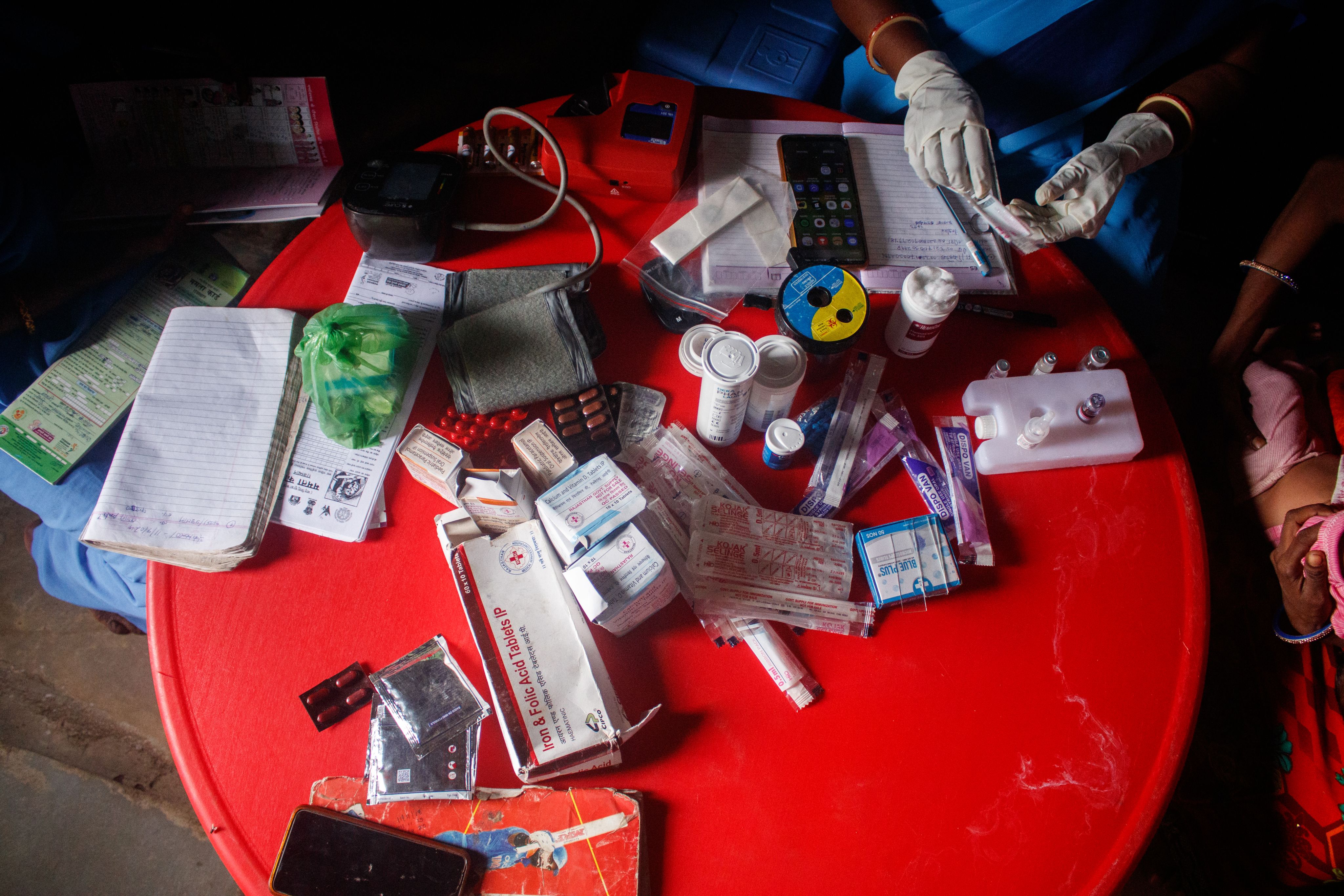
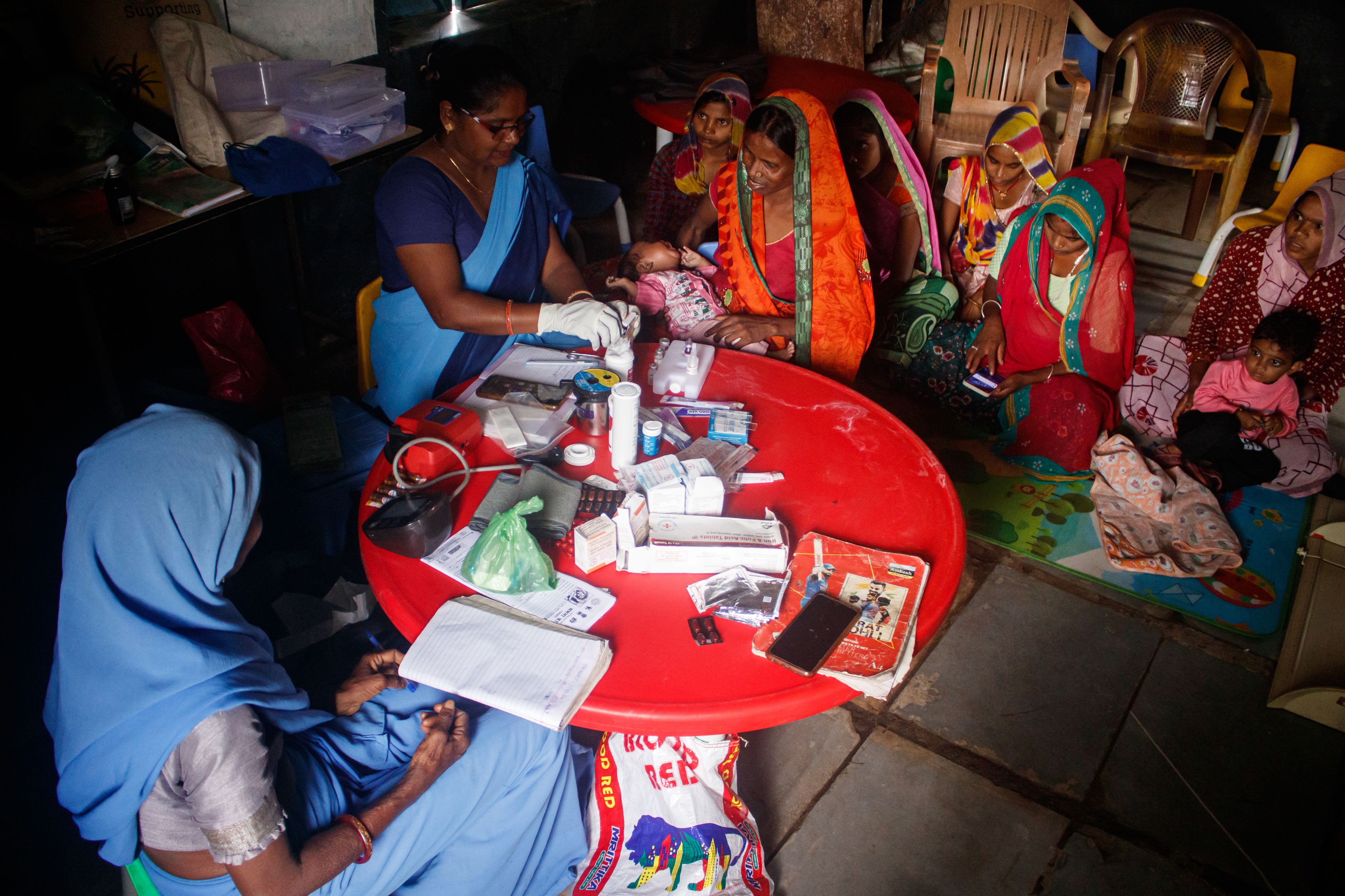

One mother who failed to attend the immunization camp was Indra Devi from the nearby Saradeet village. After walking over 2 kilometers, ASHA Laxmi Devi reached a semipermanent wooden house with rustic roof tiles. Inside, she found six children, aged 1 to 10, waiting for Indra Devi, who was working in the fields. The children will now have to visit the nearest health center for their jabs.
“Despite informing the family in advance, they didn’t attend the vaccination camp,” Laxmi Devi said. Adding that it’s not the family’s fault. “Most of them come from poor communities, and if they don’t work for the day, they can’t eat anything.” This challenge is visible in Rajasthan’s figures, which has over 70,000 zero-dose children.
If a child misses a vaccination, it is flagged in the Khushi Baby app. With the assistance of ASHAs and field monitors, ANMs track these families and visit their homes or the nearest healthcare center to ensure the children are vaccinated.
Field monitor Navratan Pargi, who has been working with Khushi Baby for nine years and has helped save hundreds of children by ensuring they don’t miss their vaccinations, said the app has been instrumental in tracking zero-dose children.
“Vaccinating them is not easy as these families stay in remote regions, sometimes even near the jungles, and neither are their phones reachable.” Field monitors and ASHAs foot-slog the challenging terrain to reach them. “Sometimes it takes many attempts to vaccinate a child as the family is not present in the house whenever we visit them,” explained Pargi.
Field monitor Navratan Pargi advises a high-risk pregnant woman about the care she needs and the nearby health centers that could help her.
Field monitor Navratan Pargi advises a high-risk pregnant woman about the care she needs and the nearby health centers that could help her.
Malnourishment exacerbates the challenges. “Often when families visit the center and their child is underweight, ill, or extremely weak, we can’t give the vaccines,” Dahma said. To address this, ASHAs closely monitor cases of child malnutrition and conduct multiple follow-ups to ensure recovery. Another benefit of the app, health workers said, is that it helps them enter data even without internet connectivity. “Once we get an internet network, the data automatically syncs, making it a hassle-free process,” Dahma said.
From 2016-2018, Khushi Baby conducted a randomized controlled trial to measure the effectiveness of digital tracking. The trial found that digital tracking improved the immunization rate in Rajasthan by 12% and decreased malnourishment by 4%.
+ Addressing malnutrition
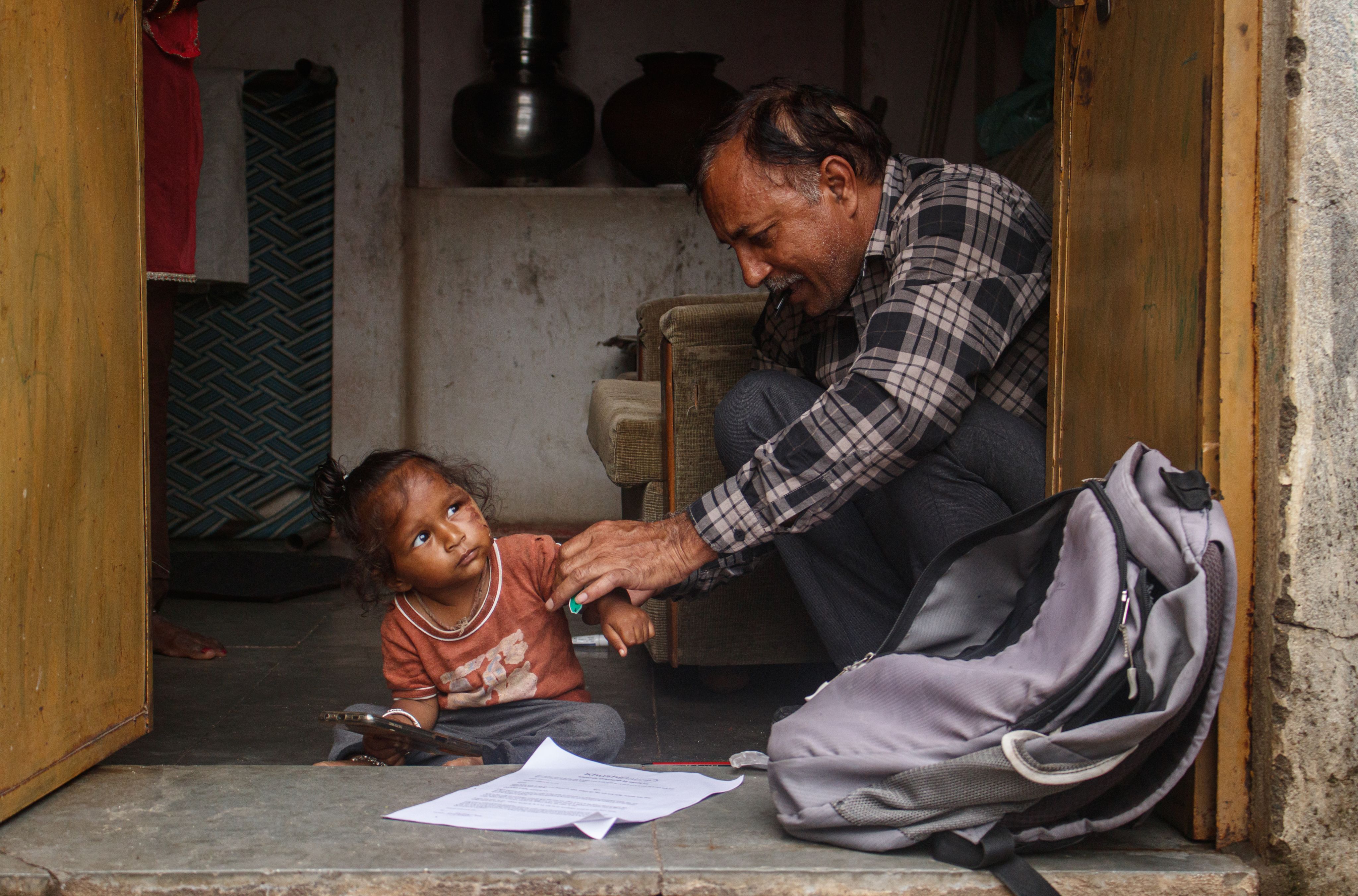
India has a severe problem of acute malnutrition, as 35.5% of children suffer from stunting — low height for their age — 19% from wasting (low weight for height), and 32.1% are underweight.
India also has the world’s largest number of zero-food children — with 6.7 million children between 6 and 23 months old who have consumed no food, milk, or formula in the last 24 hours — according to a study published in Jama Network this year.
Khushi Baby tracks parameters such as children’s weight and height to identify those suffering from malnutrition. When 3-year-old Devi Lal from Rajasthan’s Kelthara village was 7 months old, he weighed 1.5 kilograms, making him severely malnourished. He was born at home during the COVID-19 lockdown in 2021, when hospital access was difficult, and suffered from severe malnutrition from birth.
Health care workers monitoring the weight of an infant during a health checkup camp.
Health care workers monitoring the weight of an infant during a health checkup camp.
ASHAs reported his weight and height in the Khushi Baby app, which classified him as a child who needed urgent treatment. Despite repeated suggestions to seek hospital care, the family declined. Consequently, Khushi Baby team members visited the family to persuade them.
After several attempts, he was admitted to a malnutrition treatment center, or MTC, at a local hospital. Within a few weeks, his condition worsened again. He was brought to an MTC in Udaipur, 66 kilometers from the village. After 11 days, he was discharged and closely monitored. A month later, he began to gain weight.
Patriarchy and societal expectations regarding male children place significant burdens on women, with many in Rajasthan being compelled to have as many as 10 children. The Khushi Baby team screens women for pregnancy intervals and classifies them as high-risk cases accordingly.
In one such case this year in Kochla village, Durga Sagiya gave birth to Neetu, a girl who weighed less than 2.4 kilograms in the first month. ASHAs found that Sagiya had given birth to a child just nine months prior. The demand for a male child led to another pregnancy, resulting in malnutrition. Her daughter was classified as a high-risk case and was referred to the community health center for immediate treatment. Due to the severity, she was subsequently referred to the Rashtriya Bal Swasthya Karyakram, a nationwide program providing free, comprehensive health screening and treatment for children aged 0-18. However, the family did not bring her for follow-up treatment, raising concerns. With interventions from ASHAs and Khushi Baby field monitors, the family eventually resumed treatment, leading to her recovery.
ASHA Laxmi Devi uses the Khushi Baby WhatsApp bot to learn more about different types of vaccines.
ASHA Laxmi Devi uses the Khushi Baby WhatsApp bot to learn more about different types of vaccines.
Health care workers face many such challenges daily, highlighting the need to build sustainable solutions. “We need to stay rooted in the realities of the ground, empowering community health workers to act as local public health researchers. Their reports should lead to action, ensuring they see tangible improvements due to their efforts,” Nagar said.
He said the work of health care workers here goes far beyond data collection. “We want health care workers not just to collect and submit data, but use it to start a public health campaign or set up a training.” This shift, he believes, will empower and give them a feeling of satisfaction that their work is leading to improvements at the local level. “Over time, this can change how data is viewed and used, especially at the block and district levels,” he said.
ASHAs like Bhomitra Sutar reach the last mile not just to make health care accessible but also to collect data that they believe can bring a tremendous change. “Earlier, when I started using the app, I never imagined reporting healthcare parameters could help save someone. It has now become a part of my daily routine,” she said.
+Persisting challenges
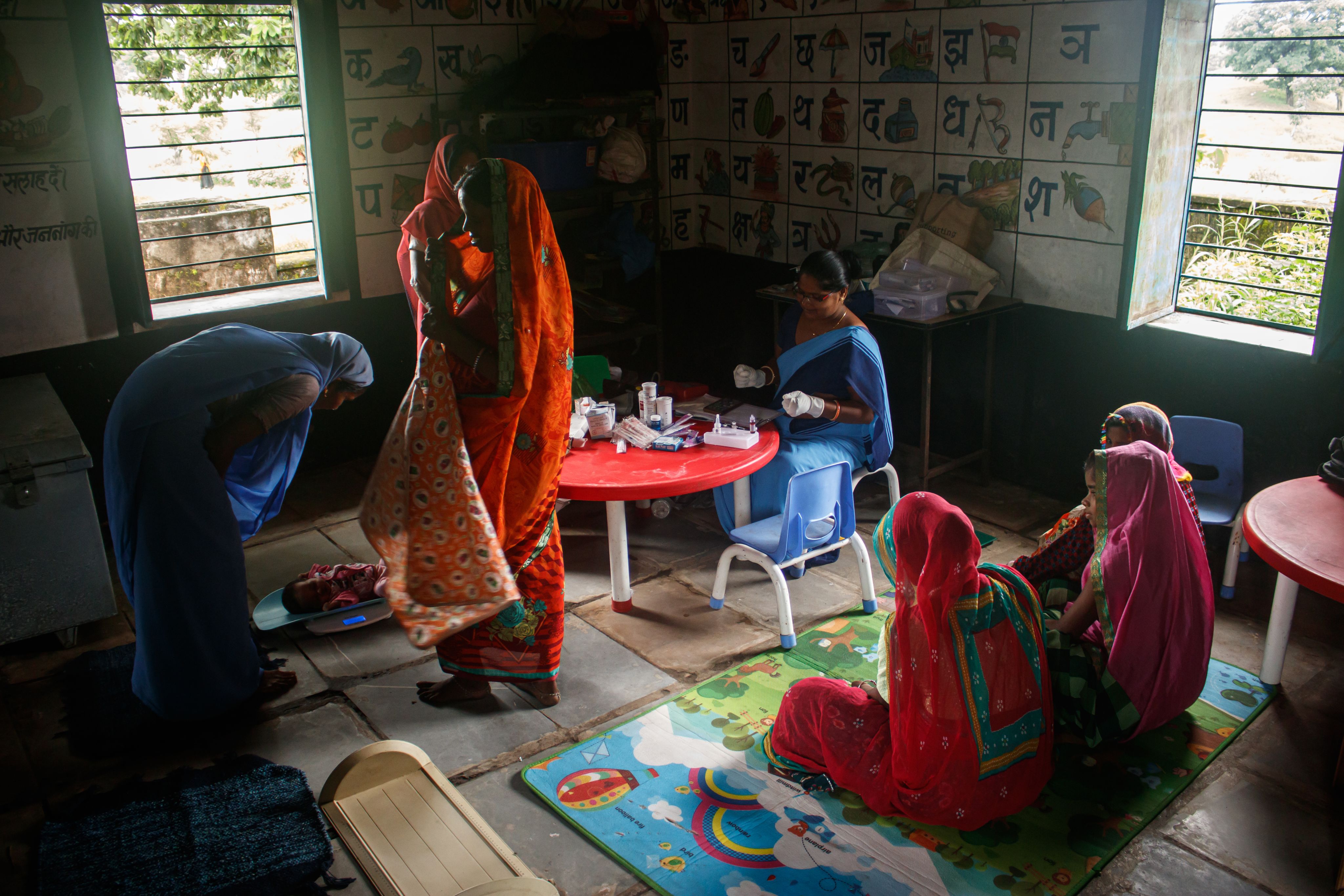
While Khushi Baby’s app has delivered positive results, ASHAs still face several challenges. Currently, ASHAs in Rajasthan are required to document all records manually. They also need to enter different types of information in six to seven different apps from different providers, leading to redundancy and increased workload. Khushi Baby has been discussing ways to streamline the process with the government.
“During an immunization camp, with at least 50 people attending and only one ANM and ASHA available, it becomes impossible to manually record everything, enter the same data into multiple apps, complete the immunization, and submit the records on time,” shared ANM Goswami. Also, ASHAs in Rajasthan said they are merely paid around Rs 4,000 ($47) per month, and payments are sometimes delayed, further demotivating them to do this work.
Nagar said policymakers and other agencies that may be focused on specific health verticals do not always go into the field to understand how multiple vertical solutions are causing a burden on the community health worker, and how, as a result of that, the data quality is suffering.
It is important to have both a “tree-level view and forest-level view,” he said. “That way, the system that is ultimately designed — that plumbing — is something that is rational for the person that will have to take the burden of it forward, and something that can actually enable her to use that system to its full potential.”
“Achieving this requires policy advocacy to reduce paperwork and consolidate apps, along with implementing technology that truly works for them.” However, creating a unified interface remains a big challenge.
ANM Jyoti Dahma enters the medical parameters of a pregnant woman into the Khushi Baby app.
ANM Jyoti Dahma enters the medical parameters of a pregnant woman into the Khushi Baby app.
Photos by Sanket Jain.
Produced by Patricia Esguerra.
This story is part of a Devex series on what’s working in global health. These are editorially independent articles, supported with funding from the Gates Foundation. Through this reporting, Devex will cover global health successes, exploring how these responses worked, what challenges they encountered, as well as key lessons and insights. To get in touch about the series, including pitches for us to consider, email editor@devex.com.

